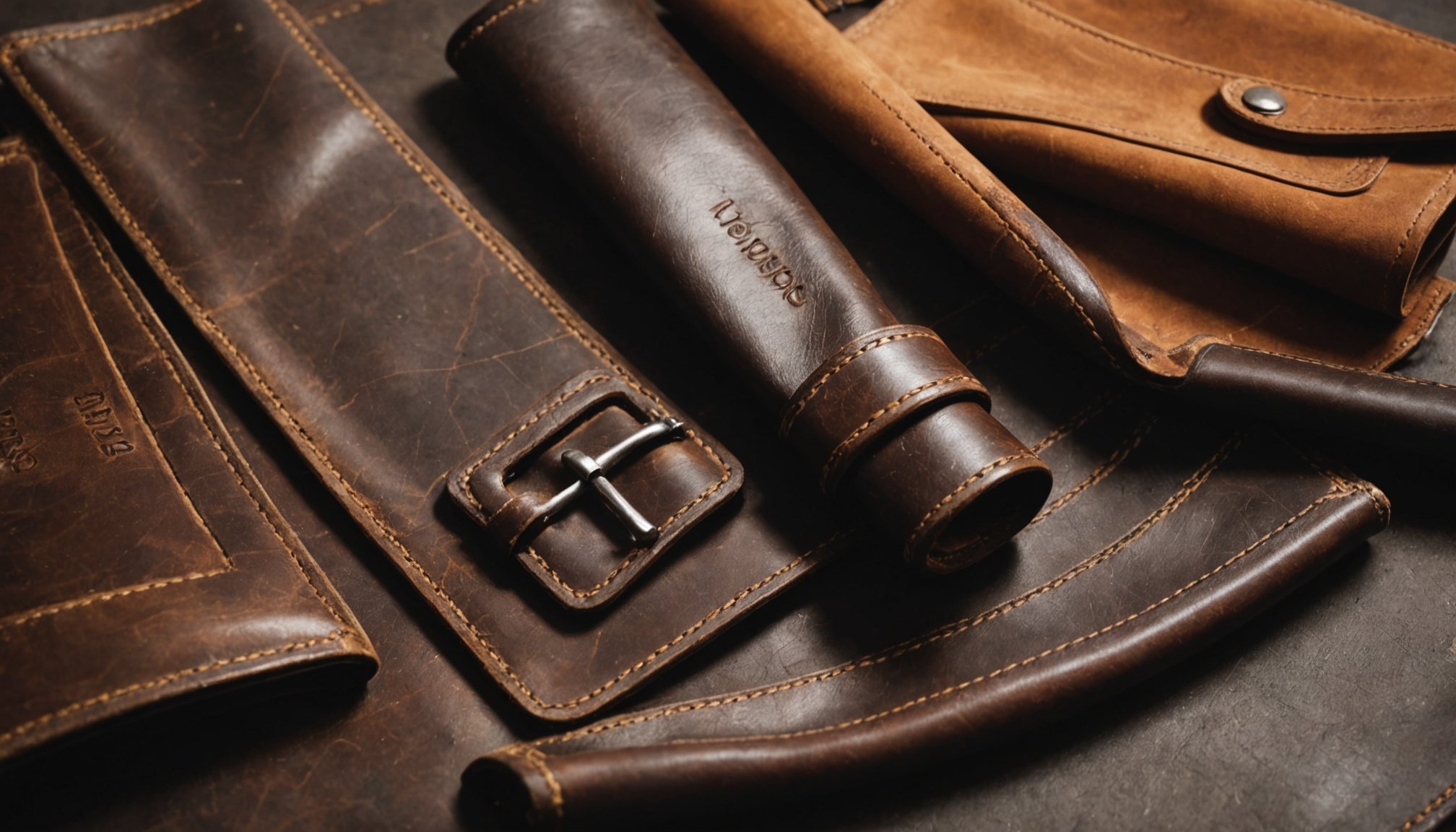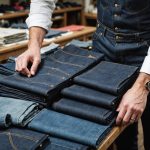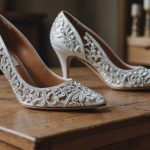Understanding Leather Types and Their Care
The world of leather apparel offers a wide variety of options with distinct leather types used in craftsmanship. Commonly, one may encounter full-grain, top-grain, and suede among these materials, each with its own texture and durability. Understanding these leather types is essential for maintaining your collection effectively, as proper care can prolong the life of these cherished items and keep them looking their best.
Knowing the characteristics of each leather type aids in leather care basics. For instance, full-grain leather is celebrated for its robustness and develops a unique patina over time, while suede requires delicate handling due to its napped finish. To ensure optimal care, it is vital to research and determine the specific needs of each leather type.
Also to read : Refine Your Business Look: Trendy Tweed Outfit Ideas for Meetings in Edinburgh
Climate plays a significant role in the longevity of leather types. Changes in temperature and humidity levels can influence their condition. In more humid climates, leather can absorb moisture, leading to mould or mildew growth. Conversely, in arid regions, the material might dry out, requiring regular conditioning to maintain its suppleness. Being mindful of these environmental factors is critical in developing a comprehensive leather care basics routine. Adjusting care strategies based on climate can significantly help in preserving the integrity of leather apparel.
Cleaning Leather Apparel
Cleaning leather is paramount to maintaining its appearance and longevity. Each leather type demands a specific approach to ensure effective results without causing damage. For instance, common cleaning methods include gentle dusting or wiping for full-grain leather, while suede may require special brushes to maintain its texture.
In the same genre : Revamp Your Everyday Wardrobe: Insider Secrets for Adding Glamour to Casual Style
To achieve optimal leather maintenance, assembling an arsenal of essential tools and products is beneficial. A soft cloth, natural bristle brush, leather-specific cleaner, and conditioner should be part of your toolkit. These items facilitate a comprehensive cleaning process tailored to the unique properties of each leather type.
A step-by-step guide for cleaning leather carefully is valuable. Begin by removing surface dirt with a dry cloth or brush. Next, apply a small amount of leather cleaner to a damp cloth and gently scrub the leather. Avoid excessive moisture as it may damage the material. After cleaning, leave the leather to air dry naturally.
This meticulous process ensures your leather remains pristine. By following these recommendations, you contribute to the durable beauty of your leather pieces. The attention to detail in cleaning leather apparel preserves both its aesthetic and functional qualities, enhancing its lifespan.
Conditioning Leather for Longevity
Preserving the integrity of leather apparel is achieved significantly through regular leather conditioning. Leather, being a natural material, benefits from conditioning as it replenishes essential oils that keep it supple and resilient. Without proper conditioning, leather can become dry and brittle, leading to cracks and irreversible damage.
Incorporating best practices for conditioning ensures that leather remains protected and durable over time. It is recommended to condition leather every few months or whenever it appears dry. Start by cleaning the leather to remove any dirt or grime, allowing the conditioner to be absorbed thoroughly. Apply a small amount of leather conditioner onto a soft cloth, gently massaging it into the leather with circular motions.
Choosing the right conditioner is also crucial. Opt for conditioners free from artificial chemicals that mimic the natural oils and waxes found in leather. Products containing beeswax or lanolin are highly effective in maintaining leather’s sheen and flexibility.
Application techniques vary depending on the leather type and product instructions, but careful and even application usually yields the best results. Allow the conditioner to absorb fully before buffing with a clean cloth. Through regular conditioning, leather can retain its quality and allure, ensuring long-lasting wear and enjoyment.
Protecting Leather from Weather Conditions
Protecting leather from adverse weather conditions is essential to maintain its quality and longevity. Rain, humidity, and other elements can cause significant damage if leather is not adequately protected. To safeguard leather from moisture, consider using waterproofing sprays that provide a protective barrier against liquids. These sprays should be applied evenly across the surface and reapplied regularly to maintain efficacy.
Humidity poses a unique challenge as it can lead to mould growth or discolouration. To combat this, ensure leather items are stored in a cool, dry environment. Use silica gel packs or dehumidifiers in storage areas to control moisture levels, especially in humid climates.
Proper storage is crucial for protecting leather when not in use. Avoid exposing leather to direct sunlight, as this can cause fading or cracking. Consider storing leather items in breathable cloth bags to prevent dust accumulation while allowing air circulation.
For rain protection, specialty waxes or creams can offer an additional layer of defence. These products not only provide weatherproofing but also nourish the leather to keep it supple. Applying them regularly will help in creating a durable shield against environmental hazards, ensuring leather remains in pristine condition.
Troubleshooting Common Leather Issues
Encountering leather common problems like scratches and stains is inevitable over time. Fortunately, minor leather repair is often feasible with simple techniques. For superficial scratches, applying a colour-matching polish can mask imperfections, restoring the leather’s appearance. When dealing with stains, quickly blot the affected area with a soft, damp cloth before it sets, avoiding rubbing to prevent spreading.
Should these issues persist, restoration products offer solutions. Leather creams can rejuvenate worn areas, while specialised cleaners tackle stubborn stains. However, it’s crucial to test these in inconspicuous areas first, ensuring they do not discolour or damage the leather.
For more severe damage like tears or deep gouges, professional leather repair services may be necessary. These experts utilise advanced techniques and tools to offer comprehensive repairs, preserving the item’s quality and appearance.
Understanding the limits of DIY repair is vital. If in doubt about handling a particular issue, it’s wise to seek professional help to prevent further damage. This balance between self-help and professional intervention ensures your leather stays in optimal condition, extending the life of your cherished pieces.
Expert Tips for Leather Care
Leather care professionals often share valuable insights to ensure your leather items remain in pristine condition. Here are some leather care tips from experts to consider:
- Regular inspection is crucial. Examine your leather apparel periodically for early signs of wear or damage. Timely detection allows for prompt intervention, preventing further deterioration.
- Understanding the specific needs of different leather types gives you a head start. Each type, from full-grain to suede, requires its unique approach tailored to maintain its natural properties.
Common myths about leather care circulate widely. One such myth suggests that all leather conditioners are interchangeable. In reality, choosing the wrong product can harm your leather. Opt for conditioners that match the leather type, as recommended earlier in the article.
Craft seasonal care routines to adapt to the UK climate. The fluctuating humidity and dampness necessitate adjustments in care strategies. During wet months, prioritize protective measures against moisture. Meanwhile, in dry conditions, focus more on conditioning to avoid cracking.
Employing these expert recommendations, you ensure your leather apparel’s long-term durability while maintaining its aesthetic appeal. Adopting these simple habits can significantly enhance the lifespan of your cherished leather items.
FAQs on Leather Care in the UK Climate
Caring for leather in the UK’s unique climate can present challenges, prompting many frequently asked questions from leather owners. Here, we address some common questions with expert insights to enhance your leather care routine.
Q: How often should I condition my leather items? Conditioning should occur every few months, but this may vary based on usage and exposure to elements. Regular conditioning prevents drying and cracking by replenishing the essential oils.
Q: Can I clean all leather types with the same products? No, it’s important to choose the right cleaners for specific leather types. Full-grain leather may benefit from a different product than suede. Misusing products can damage the leather.
Q: What’s the best way to protect my leather from the UK’s wet climate? Weatherproofing products like waterproof sprays should be employed regularly. They create a moisture barrier essential for rain protection.
For those seeking to delve deeper into leather care, numerous online resources and forums offer valuable product recommendations and advice. Exploring these can enhance your regimen, ensuring your leather pieces endure the UK’s varied climate with resilience.











